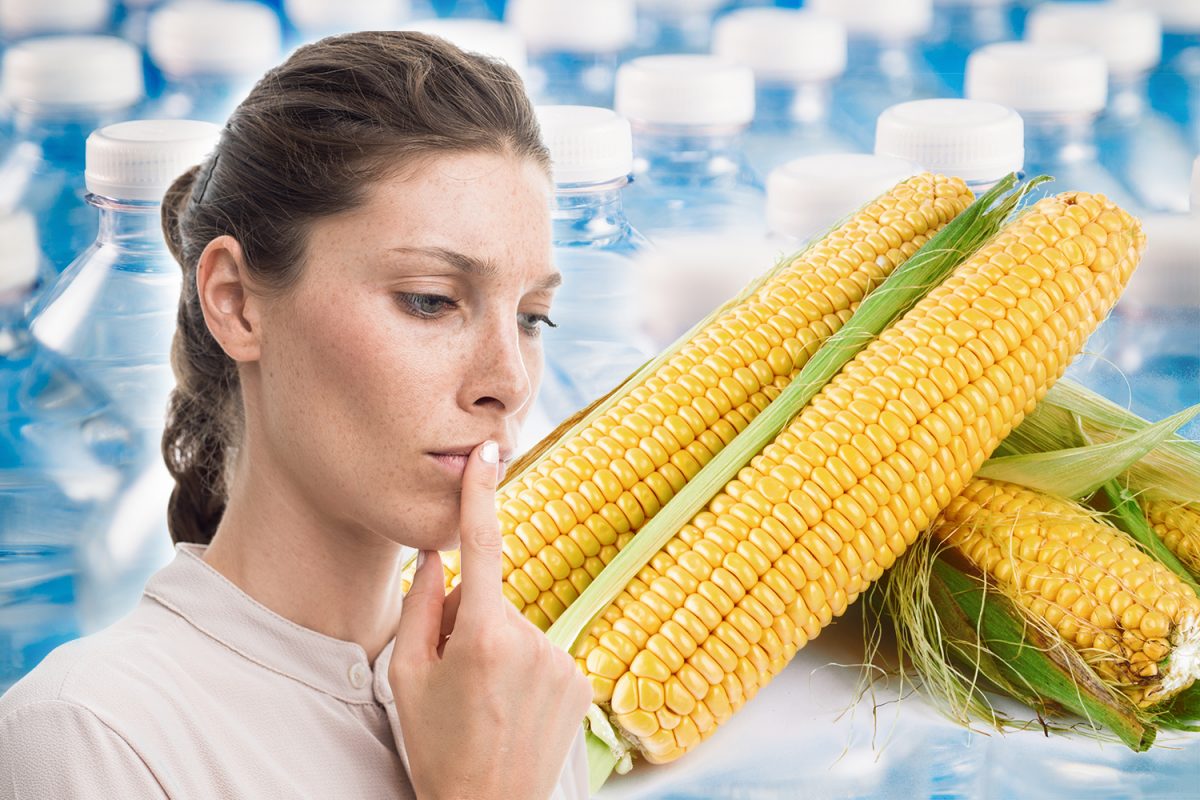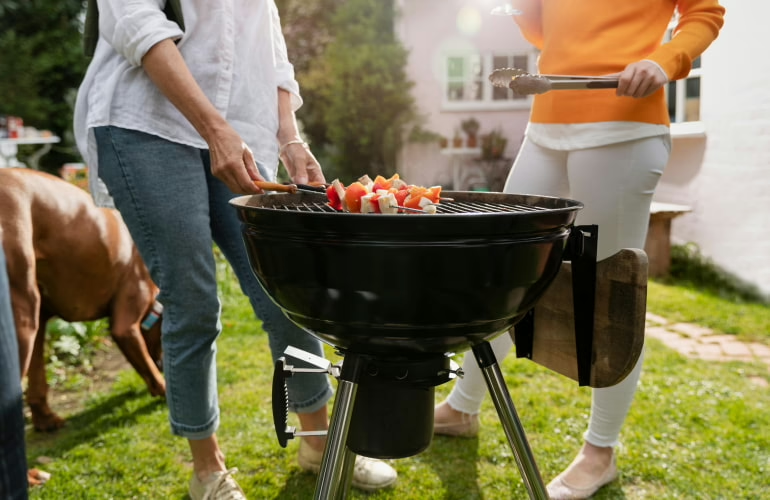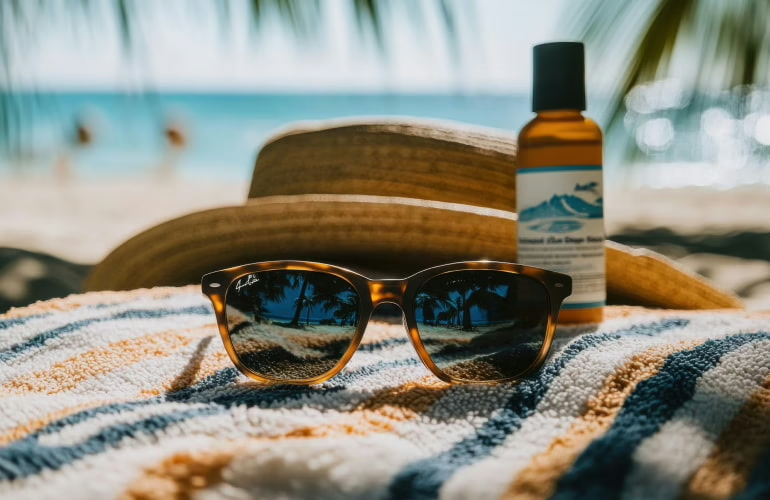Advertising Disclosure
Biodegradable and plant-based plastics: Are they really sustainable and will they truly replace plastic packaging?

According to Packaging Digest, “up to 129 million tons (or 43%) of plastic used per year is disposed of by landfill or incineration, and approximately 10 to 20 million tons of plastic ends up in the ocean.” This plastic, The Guardian explains, is on track to become more prevalent in the sea than fish by the year 2050. Once in the ocean, even those plastics labelled as ‘biodegradable’ won’t have the right conditions to break down, says UN chief scientist Jacqueline McGlade. The image this brings to mind undoubtedly horrifies most of us, but what can be done to prevent it?
While many Americans have taken up recycling, not all packaging we purchase is recyclable, and not all recycling is profitable anymore. And although we do see some companies substituting plastics with alternatives and making new types of environmentally-conscious packaging, such as bioplastics, there seem to be drawbacks to each one, however well-intentioned their creators may be – or the technology exists, but is not ready for production yet.
Materials used in place of plastic commonly include glass, which is made from sand and can therefore be easily recycled and often reused – but glass is heavy, expensive, and breaks into sharp shards, making it less appealing as a widely-used packaging material. Other alternatives are “liquid wood,” or Arboform, created with a byproduct of paper mills, used by some companies to make items such as golf tees – but the byproduct used to make Arboform (called lignin) may be reduced over time as paper-making becomes more efficient, rendering this plastic substitute less available and thus probably much more expensive.
Casein-based packaging, an edible plastic currently in development, is made from the main protein in milk and, while not an entirely new phenomenon, (in slight variations, similar forms of casein were used in the 20’s and 30’s to make buttons and in ancient Egyptian paint and glue), in its current more easily manufactured forms, we may find it more plentifully on future store shelves. Chicken feathers can also be used to make cost-effective, fully biodegradable keratin-based “plastic” packaging, among other things, and a form of alternative plastic containing plastic additives (more biodegradable than regular plastic, but not 100% biodegradable) is also in the works. Additionally, there are 3 types of polyester and starch-based polymers being tried as plastic substitutes as well – we’ll watch for updates on these as developments continue
Plant-based plastics in development for Pepsi and Coca-Cola bottles are great in that they come from renewable, lower-carbon sources, but according to Slate, “the resulting plastics are chemically identical to the polyethylrene terepthalate, or PET, and high density polyethylene, or HDPE, that regular plastic bottles are made of” – meaning, according to marine expert Marcus Eriksen that “They’re just using plants to make the same polymers you find in other plastics. It has zero effect on plastic pollution. They don’t biodegrade, they pollute the world’s oceans and soils, and still leach potentially harmful chemicals into our food.”
Corn-based plastic is another alternative which is labelled as compostable – but that is essentially only true in a “controlled composting environment”. Such an environment involves a large composting facility where compost remains at 140 degrees for 10 consecutive days – and thus not really accessible for most average residential waste, leading to a great amount of corn-based plastic ending up in landfills in spite of its “compostability.”
These all indicate noble pursuits which have fallen short of their full ecological potential – but let’s not throw the baby out with the bathwater. Although the ultimate solution involves something like architect William McDonough’s vision in Cradle to Cradle: Remaking the Way We Make Things, in which Smithsonian Mag describes “durable goods, like TVs and cars, are made from substances that cycle back into the manufacturing process, while packaging for short-lived products like shampoo will decompose back into the earth,” we can still take heart that it’s “visionary”, according to Eric Lombardi, to even consider biologically based alternatives to petroleum-based plastics. Lombardi, leader of the international Zero Waste movement, recently expressed that although there are problems with (some plastic alternatives), “…let’s not kill the good in pursuit of the perfect.” He views issues with current alternatives as signals of a larger deficiency in our overall waste management, and called for a “composting revolution” in a recent interview with Smithsonian, where he claimed, “We need a convenient, creative collection system with three bins: one for biodegradables, which we’ll compost, one for recycling, and one for whatever’s left.” Until then, we must work with what we’ve got – which includes a lot of great ideas landing just short of fruition.
One hopeful recent creation came from London in the form of fruit jerky products created by Ilana Taup and Michael Minch-Dixon. Their original product used fruit which would otherwise have ended up in landfills to make their fruity Snact bars, sold in packaging which biodegrades in garden composts within 6 months. The problem? The jerky, although individually wrapped in biodegradables, was ultimately sold in larger, non-biodegradable plastic containers. But Taup and Minch-Dixon found a solution – they’ve partnered with the Israeli packaging producer TIPA, a company which makes zipper bags sold in the United States as well as packaging for the Dutch supermarket chain Ekoplaza, to replace the containers with a biodegradable substitute which breaks down in 180 days. Backed up by the likes of Stella McCartney, TIPA continues their pilots with several customers and seeks additional partners for deals using the cutting edge packaging. We’ll watch for developments on this, and hope like Sian Sutherland that it catches on. Sutherland, co-founder of A Plastic Planet, recently stated that packaging manufacturers should follow TIPA’s example and “take a stand on the curse of plastic pollution.”
At the end of the day, there are EPR laws in existence which can be broadened, brought to new geographies, and implemented if necessary. EPR (extended producer responsibility) laws “require manufacturers to take back their own packaging materials once sold in hopes they will reuse it or perhaps attempt to sell it themselves. Australia, Ireland, the UK and Japan currently have EPR laws in place, as well as some areas of Canada.” After seeking out products made with recycled products, we can also seek out those which willingly take back their own packaging, and demand that the others start. And let’s not forget the most important aspect to the whole argument – we must take our own individual responsibility toward stewardship and buy less, demanding less packaging when possible, reusing whenever we can (which is almost always), and self-banning harmful products (like straws and plastic shopping bags) until they – and the concept of “single use” containers – become a thing of the past entirely.





